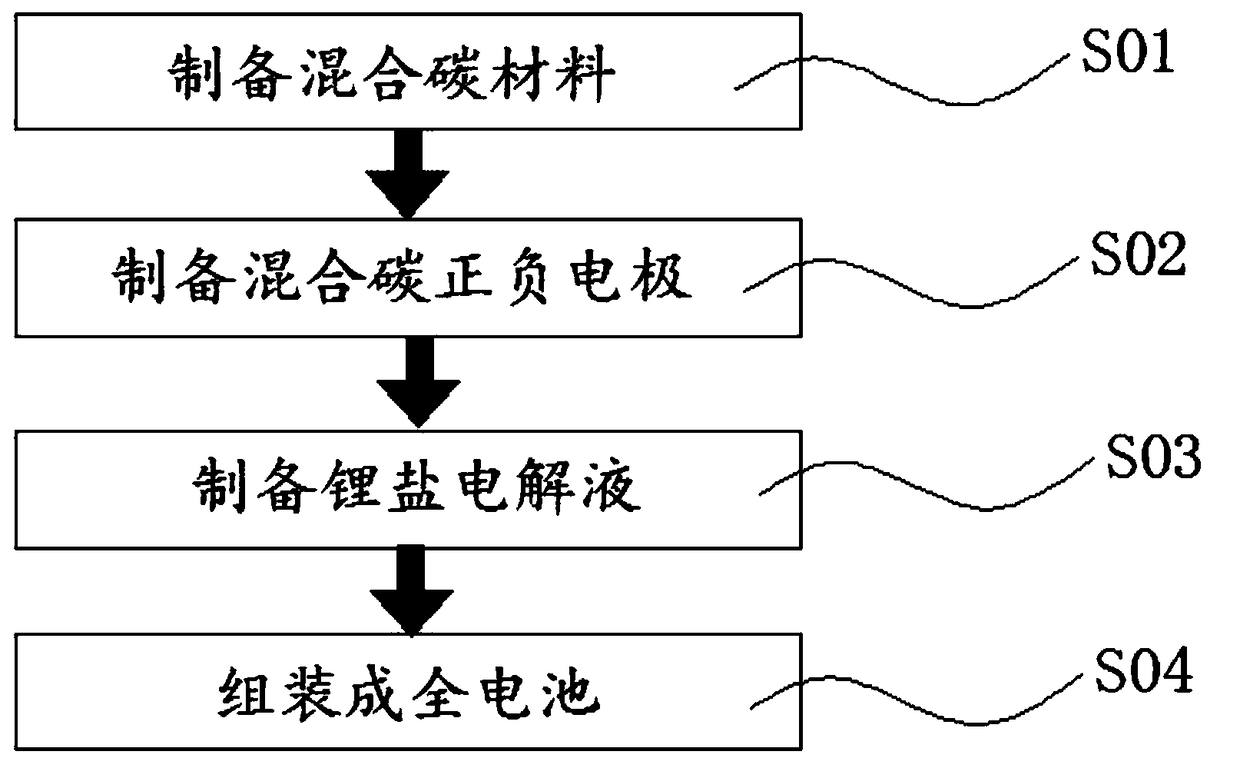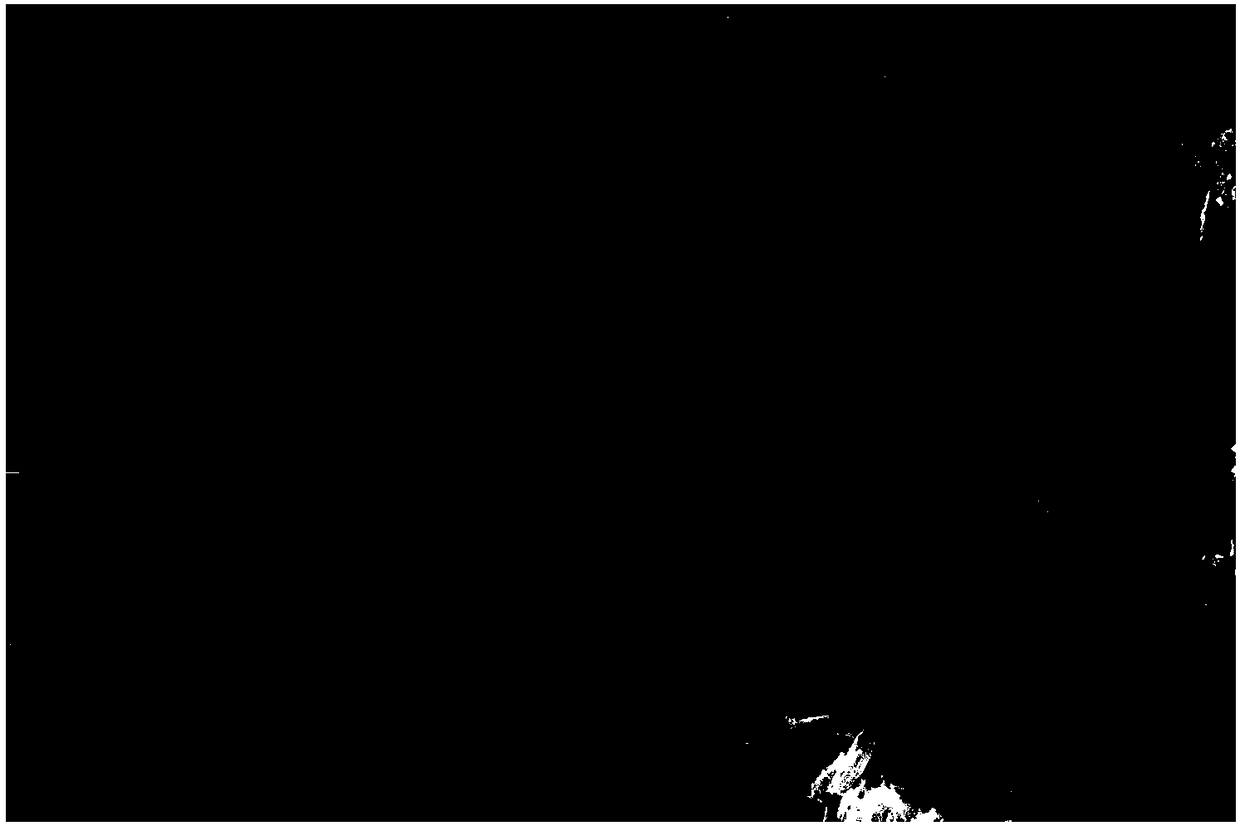Lithium di-ionic total battery using mixed carbon material as positive and negative electrodes
A hybrid carbon, positive and negative technology, used in battery electrodes, secondary batteries, non-aqueous electrolyte batteries, etc., can solve problems such as commercialization of high-cost dual-ion batteries, and achieve structural stability, environmental friendliness, and positive and negative electrodes. Material stabilization effect
- Summary
- Abstract
- Description
- Claims
- Application Information
AI Technical Summary
Problems solved by technology
Method used
Image
Examples
Embodiment 1
[0041] S01, prepare mixed carbon material:
[0042]Mix graphene and nano-graphene at a weight ratio of 6:4, then grind for 12 hours in a water-resistant environment, then raise the temperature to 100°C at a rate of 3°C under a protective gas atmosphere, and then treat at a constant temperature for 15 hours to obtain a mixed carbon materials;
[0043] S02, preparing mixed carbon positive and negative electrodes;
[0044] Mix the mixed carbon material obtained by S01: acetylene black: carboxymethyl cellulose in a mass ratio of 8:1:1; then dissolve the mixture in ethanol: H 2 The mass ratio of O was 1:2 in the mixed solution and continued to stir for 20h; then the mixture was mixed according to the average weight of the carbon material about 4mg / cm 2 Coated on the aluminum foil of the positive electrode substrate, the average weight of the mixed carbon material is about 2mg / cm 2 Coated on the negative electrode substrate copper foil, and dried them in a vacuum oven at 70°C for...
Embodiment 2
[0052] S01, prepare mixed carbon material:
[0053] Graphene and molybdenum disulfide were mixed at a weight ratio of 8:2, then ground for 12 hours in a water-resistant environment, and then heated to 100°C at a rate of 3°C under a protective gas atmosphere, and then treated at a constant temperature for 15 hours to obtain a mixed carbon material 1;
[0054] Mix nano-graphite and NiCoO4 at a mass ratio of 9:1, then grind for 15 hours in a water-absolute environment, then raise the temperature to 100°C at a rate of 3°C under a protective gas atmosphere, and then treat at a constant temperature for 18 hours to obtain a mixed carbon material 2;
[0055] S02, preparing mixed carbon positive and negative electrodes;
[0056] Mix the mixed carbon material 1 obtained in S01: acetylene black: carboxymethyl cellulose in a mass ratio of 8:1:1; then dissolve the mixture in ethanol: H 2 The mass ratio of O was 1:2 in the mixed solution and continued to stir for 20h; then the mixture wa...
PUM
 Login to View More
Login to View More Abstract
Description
Claims
Application Information
 Login to View More
Login to View More - R&D
- Intellectual Property
- Life Sciences
- Materials
- Tech Scout
- Unparalleled Data Quality
- Higher Quality Content
- 60% Fewer Hallucinations
Browse by: Latest US Patents, China's latest patents, Technical Efficacy Thesaurus, Application Domain, Technology Topic, Popular Technical Reports.
© 2025 PatSnap. All rights reserved.Legal|Privacy policy|Modern Slavery Act Transparency Statement|Sitemap|About US| Contact US: help@patsnap.com



